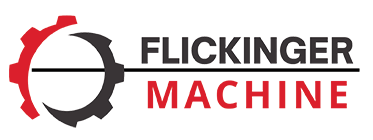Push on Dead Ender
Push On Dead Enders are Heavy-Duty Anchor Seaters
Push on dead enders are workhorses in the concrete fabrication industry. Normally found on shop fabrication lines, push on dead enders are reliable wedge seaters. They tend to be more reliable than pull-seating while still applying a massive amount of seating force.
A push on dead ender can function as its own workstation on a fabrication line, and this is how most of them are used. That’s because these devices are generally too heavy for field applications. If your concrete fabrication involves seating tensioning anchorages, then a push on dead ender can improve efficiency.
The Essential Components of a Push On Dead Ender: Ram, Die, Cylinder, Housing and Anchorage Inserts
Push on dead enders are defined by their power and reliability. To provide both, each dead ender includes the following main components:
- The hydraulic cylinder – The hydraulic cylinder takes pump-delivered fluid power and converts it into steady linear motion. Hydraulic cylinders are featured in an impressive array of applications, including all post tensioning applications. Inside the cylinder body is a piston that extends via hydraulic pressure and retracts with spring loading.
For push on dead ending purposes, it’s recommended that you select a 25-ton cylinder for the job. This will meet all loading requirements while maintaining a compact build that fits well in dead ending jacks.
- The ram – The ram sits at the end of the piston head and is attached to the piston using a coupler. During operation, the ram focuses the linear force delivered by the piston and ensures it is appropriate for wedge seating purposes. The ram also includes a spring for steady load transfer and the wedge holder itself.
- The die – Push on dead enders are designed to fit different types of wedges to ensure optimal seating efficiency and reliability. To ensure compatibility, a die is attached to the front of the wedge seater, designed to fit a particular type of wedge. The die can be quickly switched out for different wedges when necessary.
- The housing – The ram, wedge seater and load plate are all contained inside the dead ender’s housing. This housing protects sensitive mechanical components and the user during operation. Given the forces involved, the housing should be made from durable material like carbon steel.
- The anchorage inserts – Anchorage inserts can be attached to the load plate and work with the wedge seater to ensure an optimal fit. Anchorage inserts can be removed and replaced as necessary, and are also compatible with a range of wedge designs.
A Few Features to Look for in a Push On Dead Ender
If your fabrication line could use a push on dead ender, there are a few features to look for. They include:
Compatibility with a range of anchorage designs
Push on dead enders are at their best when they can be operated without interruption. To support this goal, it’s important to pick a dead ender that can work with a variety of anchorage designs. This includes bare, barrel, and encapsulated anchors. Ideally, the dead ender should be able to access the post tension cable whether it is sheathed or not.
Magnetized wedge holder
The wedge seater is made up of a few components, including the ram and a spring for modulating force transfer. On some push on dead enders, there’s also a magnet located on the front of the die. This magnet secures the wedge for accurate seating, and it also allows for hands-free operation. Without your hands getting involved, wedge seating is faster, more consistent, and safer.
Rugged, durable design
Push on dead enders can apply impressive amounts of seating force. Also, concrete fabrication machinery can be subjected to moisture and various airborne corrosive products (like SOx and NOx).
That means a durable build is critical for push on dead enders. Look for steel construction, with the load plate, ram, and housing. While carbon steel is fine for most components, it’s especially important to use a cylinder that is made from corrosion-resistant stainless steel, as any cracks or pitting could result in oil contamination.
The Flickinger Machine Team Can Source and Service Your Push On Dead Ender Components
Push on dead enders are reliable wedge seaters, as long as they’re properly maintained. In most cases, this means paying extra attention to the hydraulic cylinder and ram, as this is where issues are most likely to emerge.
Given their application, hydraulic cylinders used for dead ending are not subjected to some of the stresses that other cylinders are – like side loading, for example. However, they can still develop problems with seals, develop leaks, have issues with oil contamination or even suffer piston damage due to excessive loading. These issues will lead to total, potentially catastrophic, failure if they aren’t addressed right away.
If your dead ending equipment is having problems maintaining proper pressure levels, the Flickinger Machine team can help. Our expert-led crew can identify the problem, assess its severity and either repair or replace the damaged component. And if your team needs a new cylinder or new wedge seating equipment, we can provide an ideal replacement.
